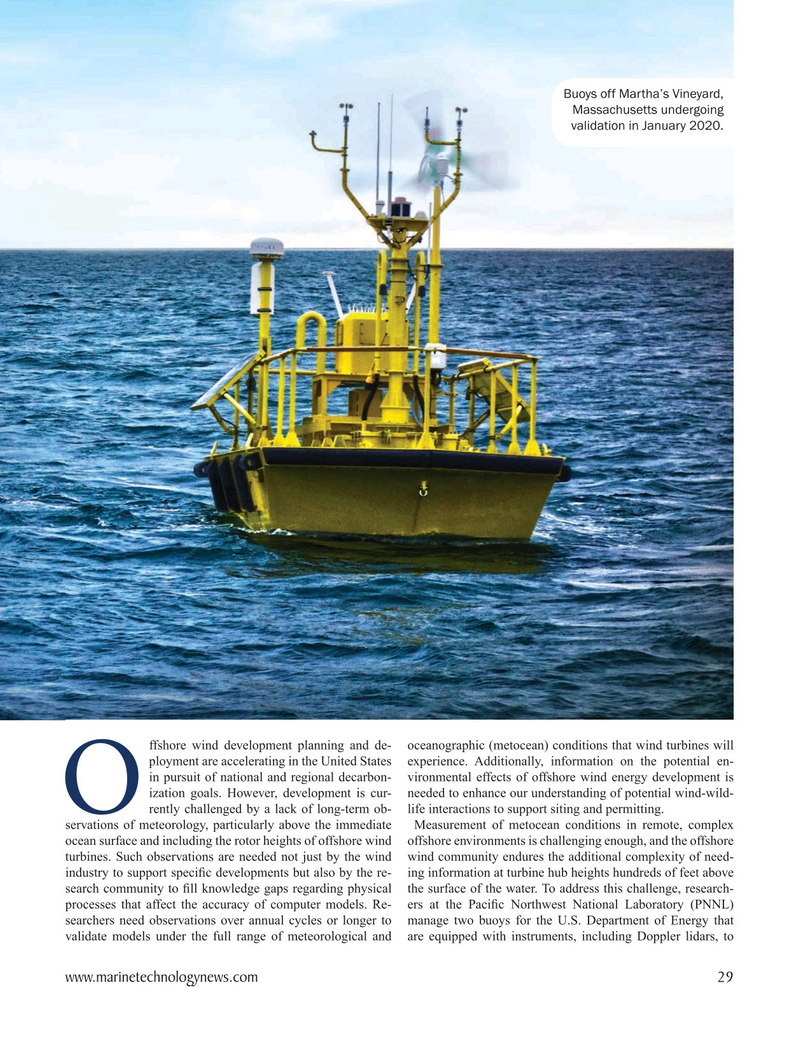
Page 29: of Marine Technology Magazine (November 2021)
Ocean Observation: Gliders, Buoys & Sub-Surface Networks
Read this page in Pdf, Flash or Html5 edition of November 2021 Marine Technology Magazine
Buoys off Martha’s Vineyard,
Massachusetts undergoing validation in January 2020. ffshore wind development planning and de- oceanographic (metocean) conditions that wind turbines will ployment are accelerating in the United States experience. Additionally, information on the potential en- in pursuit of national and regional decarbon- vironmental effects of offshore wind energy development is ization goals. However, development is cur- needed to enhance our understanding of potential wind-wild-
O rently challenged by a lack of long-term ob- life interactions to support siting and permitting.
servations of meteorology, particularly above the immediate Measurement of metocean conditions in remote, complex ocean surface and including the rotor heights of offshore wind offshore environments is challenging enough, and the offshore turbines. Such observations are needed not just by the wind wind community endures the additional complexity of need- industry to support speci? c developments but also by the re- ing information at turbine hub heights hundreds of feet above search community to ? ll knowledge gaps regarding physical the surface of the water. To address this challenge, research- processes that affect the accuracy of computer models. Re- ers at the Paci? c Northwest National Laboratory (PNNL) searchers need observations over annual cycles or longer to manage two buoys for the U.S. Department of Energy that validate models under the full range of meteorological and are equipped with instruments, including Doppler lidars, to www.marinetechnologynews.com 29
MTR #8 (18-33).indd 29 11/22/2021 12:39:09 PM

 28
28

 30
30
